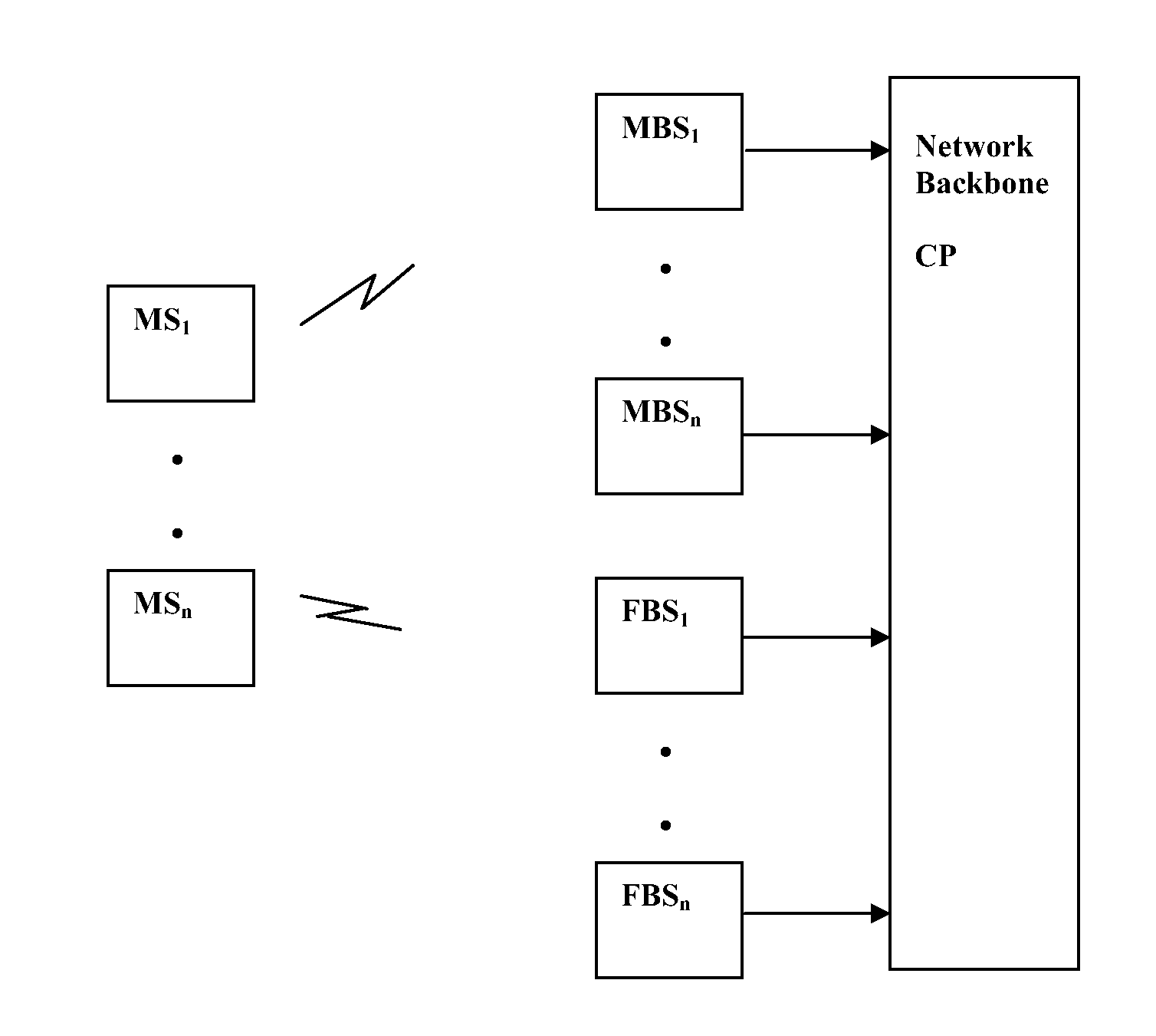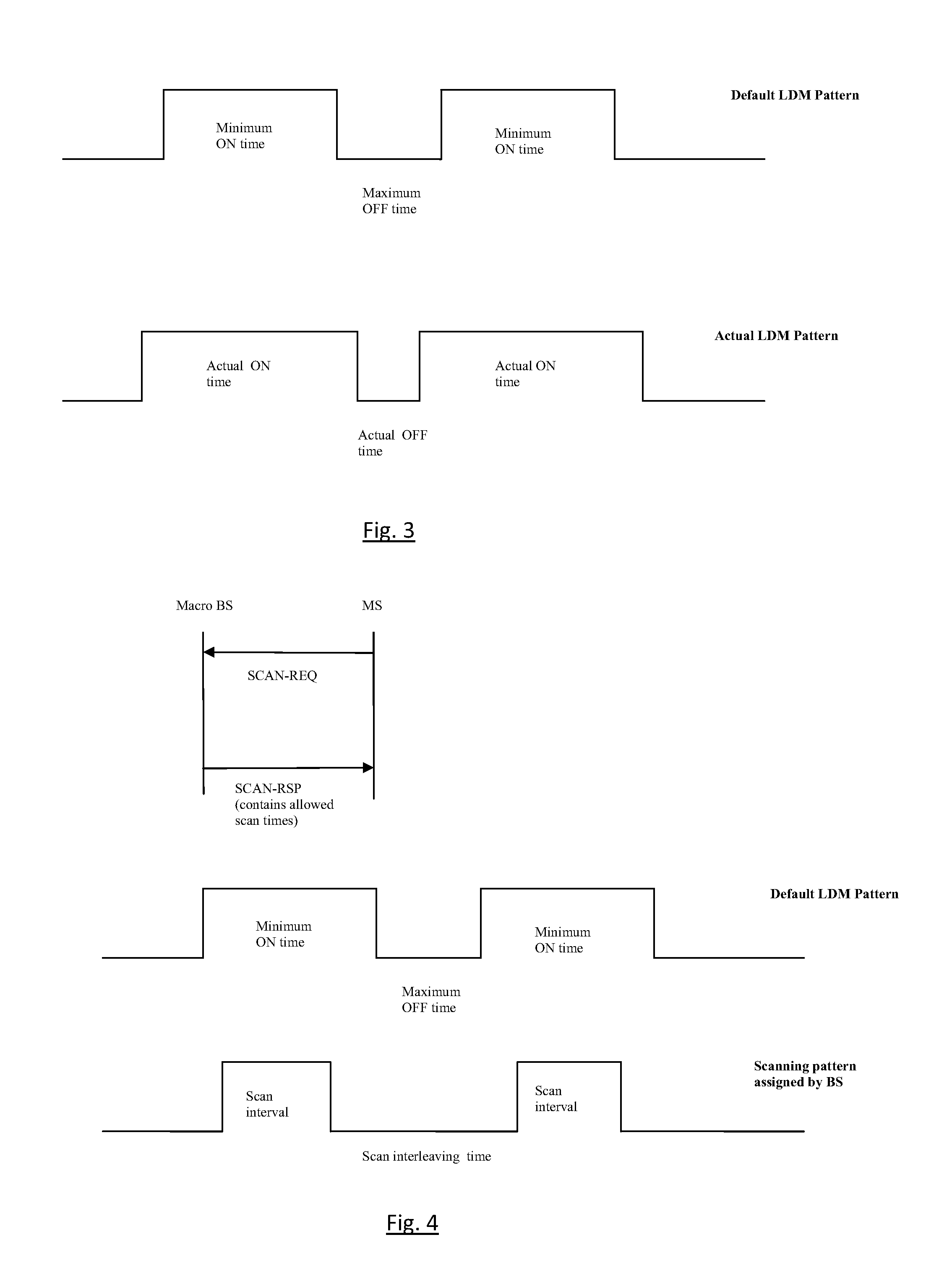Low duty mode for femtocell base stations
a low duty mode and base station technology, applied in power management, wireless commuication services, high-level techniques, etc., can solve the problem of affecting the amount of overlay macro bs's that may still exis
- Summary
- Abstract
- Description
- Claims
- Application Information
AI Technical Summary
Problems solved by technology
Method used
Image
Examples
Embodiment Construction
[0012]FIG. 1 illustrates the basic components of a cellular wireless communications system that includes femtocells and macro cells. A plurality of macro cell base stations MBS1 through MBSn and femtocell base stations FBS1 through FBSn are shown, where each base station is located to cover a specific geographic area or cell. A plurality of mobile stations MS1 through MSn are shown that communicate wirelessly with one or more of the base stations. The base stations interface via a backhaul link to the core portion CP (backbone) of the service provider's network over which they may relay traffic as well as communicate with one another.
[0013]FIG. 2 shows the subsystem components of an exemplary base station. A processing device 10 coupled to an associated memory 12 controls the operation of a wireless subsystem 20 for providing the air interface and a network subsystem 30 for interfacing to the backhaul link. An exemplary mobile station would be represented similarly minus the network...
PUM
 Login to View More
Login to View More Abstract
Description
Claims
Application Information
 Login to View More
Login to View More - R&D
- Intellectual Property
- Life Sciences
- Materials
- Tech Scout
- Unparalleled Data Quality
- Higher Quality Content
- 60% Fewer Hallucinations
Browse by: Latest US Patents, China's latest patents, Technical Efficacy Thesaurus, Application Domain, Technology Topic, Popular Technical Reports.
© 2025 PatSnap. All rights reserved.Legal|Privacy policy|Modern Slavery Act Transparency Statement|Sitemap|About US| Contact US: help@patsnap.com



